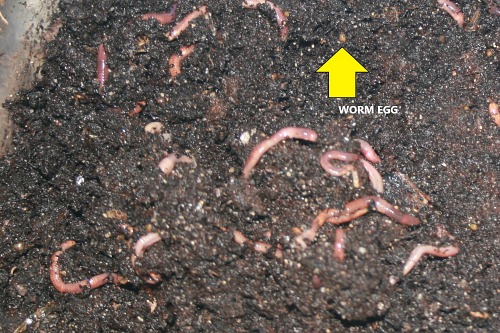Take Care of Your Lawn with the Best Products from Lake Hickory Bait
Unlock the Tricks of Red Wigglers: Your Overview to Composting Success
The assimilation of red wigglers into composting techniques offers a significant opportunity for enhancing soil health and promoting sustainability. These organisms are not merely efficient recyclers of organic waste; they offer a myriad of benefits that can transform yard monitoring. Comprehending their needs and behaviors is essential for optimizing their potential, from setting up an appropriate worm bin to feeding them the right products. As we discover the necessary parts of effective vermicomposting, one may wonder how these tiny creatures can bring about an extra vivid and efficient garden community.

What Are Red Wigglers?
(Lake Hickory Bait)Red wigglers, scientifically referred to as Eisenia fetida, are a varieties of earthworm largely made use of in composting because of their impressive capacity to disintegrate organic issue effectively. These worms are characterized by their reddish-brown pigmentation and a segmented body, commonly determining between 3 to 4 inches in size. Unlike other earthworm types, red wigglers grow in rich, natural atmospheres, making them ideal for vermicomposting systems.
Belonging To North America, they are commonly found in decomposing leaves and garden compost piles, where they play a crucial function in nutrient recycling. Their adjustment to residing in a wet, aerobic atmosphere allows them to eat big amounts of organic waste, breaking it down right into nutrient-rich castings that improve dirt wellness.
Red wigglers replicate swiftly, with a single worm qualified of generating several cocoons every week, each having multiple hatchlings. This quick reproduction rate adds to their performance in composting operations. They like temperature levels in between 60 ° F and 80 ° F, and their activity level raises considerably within this variety, more assisting in the decomposition process. Comprehending the biology and actions of red wigglers is important for maximizing their possibility in composting applications.
Benefits of Utilizing Red Wigglers
Taking advantage of the power of red wigglers in composting uses countless advantages that boost dirt wellness and advertise lasting waste monitoring. These impressive microorganisms successfully break down organic matter, transforming kitchen scraps and yard waste right into nutrient-rich vermicompost. This ended up item is remarkably advantageous for plant growth, as it improves soil framework, raises dampness retention, and improves nutrition availability.

(Lake Rhodhiss Bait)Additionally, the presence of red wigglers in your composting system can increase the composting process, producing premium garden compost in a portion of the time contrasted to typical methods. The spreadings created by these worms are also teeming with valuable bacteria that further improve the soil ecological community.
Establishing Your Worm Bin
Developing an efficient worm bin is an uncomplicated process that can dramatically improve your composting initiatives. The very first step is selecting a suitable container. Worm containers can be made from plastic storage containers, wooden boxes, or commercially readily available worm bins. Make certain the bin has appropriate water drainage and ventilation holes to preserve optimum moisture degrees and air movement.
Following, prepare the bed linen product, which acts as the worms' habitat. A mix of shredded paper, cardboard, and coconut coir functions well, providing a comfortable atmosphere for the worms. Purpose for a bedding depth of concerning 4-6 inches. Dampen the bedding lightly, ensuring it looks like a moist sponge without excess water merging near the bottom.

Feeding Your Red Wigglers
To make sure the health and wellness and productivity of your red wigglers, it is important to provide them with a well balanced diet plan that meets their dietary requirements. Red wigglers thrive on a varied range of organic products, which not only provide required nutrients yet additionally advertise efficient composting.
Beginning by integrating cooking area scraps such as veggie peels, fruit cores, and coffee premises. Prevent citrus fruits, onions, and garlic, as these can be detrimental to worm health. In addition, present shredded paper, cardboard, and dry fallen leaves to produce a well-aerated setting.
Feeding frequency need to be kept track of; usually, worms can take in half their body weight in food weekly. It is crucial to prevent overfeeding, as excess food can result in unpleasant odors and bring in pests. A great practice is to add food in percentages, enabling Recommended Reading worms to refine it before presenting a lot more.
Maintaining moisture degrees is additionally important; the bed linens should perspire yet not soggy. Lastly, be certain to routinely inspect the temperature level and pH degrees of the bin to make sure an optimum environment for your red wigglers, eventually improving their composting performance.
Harvesting and Utilizing Garden Compost
An effective composting procedure with red wigglers finishes in the rich, dark compost referred to as vermicompost, which can significantly enhance dirt health and wellness and plant development. Gathering this nutrient-dense material usually happens every three to 6 months, relying on the size of your system and the amount of raw material being processed.
To harvest, delicately different the compost from the worms and any undecomposed products. One efficient method entails relocating the contents of the container to one side and adding fresh bed linens and food to the empty space, urging the worms to migrate. After a few days, the garden compost can be gathered from the contrary side.
It is vital to utilize vermicompost properly to optimize its benefits. By including vermicompost into your gardening routine, you not only recycle natural waste but also create a thriving ecological community that sustains lasting horticulture techniques.
Conclusion
In summary, red wigglers serve as extraordinary allies in composting initiatives, changing natural waste right into nutrient-rich vermicompost. By comprehending the ideal conditions for their habitat, feeding demands, and compost harvesting techniques, gardeners can enhance soil health and advertise plant vigor.